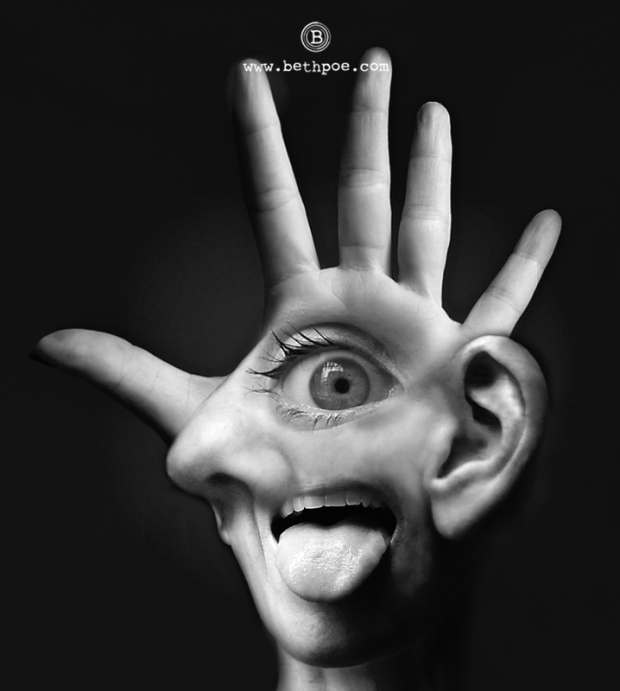By Katlyn Arrenholz
So it’s time to go off and get ready for college, YAY! So many new things to learn and encode into your brain. What expectations do you have for your first day? Do you see yourself walking to your first class and sitting at one of the many tables set out for you? Well even if you hadn’t you have now! The act of mentally seeing how your first day of college will go is a form of mental imagery. But mental imagery is not just used for future events it’s used for a plethora of other things that we do daily as students, and just as humans, and we don’t even notice that we are using it!

Mental imagery is not just a picture that we see in our heads, it’s actually everything that goes along with it as well! Just think of your SENSES. Mental imagery helps us to actually put ourselves back into a situation that has occurred or into a new situation that hasn’t even happened yet. Even the times when we don’t want to relive a certain memory or try not to think of the things that could happen, those mental images can sometimes just catch us off guard, and bring us back to how we felt, what we saw, smelt, or touched in a memory or what we expect will happen in any given situation (so sorry but that does include the bad ones)(2). Imagery has been defined as using all the senses to re-create or create a picture of something and it all happens in our noggins (3).
There are 2 ways that we can describe mental images. One way is through the term propositional code. “What is that?” you ask. Well it is really just an abstract representation of something we hear verbally. So we make an image in our head from what we hear or read. The second way is through analog coding, which are like maps that you make in your head that aren’t actually realistic but they get the job done for your brain to understand(6). Meaning that we take what we have already seen and make it into something revamped! Kosslyn (a researcher of mental imagery) said that it is, and this may come as no surprise, but that it is easier to see the detail of something that we picture closer in our heads, than if it were to seem farther away. Dual coding also has a pretty large role in mental imagery, because when we are using dual coding we are actually using images that we have to help us remember important information(cool right?)(1)
Think about it this way. You’re apart of a sports team. While playing that sport you visualize what play you are running in your head, whether it be basketball, volleyball, hockey etc. Athletes always have the next task at hand on their mind. Take Olympians for example. There is one Olympian that participates in the luge, and they said that they could potentially only do the track once in a day but since the course doesn’t change they run through the track over 100 more times in their head throughout the rest of that day. Now some of us might not be that intense about our encoding but to these athletes it’s obviously important! (5)Then when asked about how they visualize a victory some of the athletes came back with. “You have to smell it. You have to hear it. You have to feel it, everything.” Because if you can’t picture yourself winning then how can you expect to! (4)

Overall we use mental imagery all throughout our day, and throughout our life! So remember just because you don’t want to remember how you felt when you missed that game winning shot, or how you and your girlfriend or boyfriend broke up, your mind can put you right back in to how it felt, what it smelled and what the crowd sounded like or their face when they told you it wasn’t working out. No matter if you want it to or not. There are a lot of things that go into mental imagery and learning about it too. So just some advice from college student to college student. Get your work started at a decent time, because I can put myself right back into a time when I waited to start a project until the night before thinking that it would be fine and then, I can still feel how awful it felt when I knew how disappointed my professor was, because I could see it on their face. The less memories you have like this the better! Make good ones, and visualize you getting great grades put yourself in the spotlight and try to feel what it would feel like to write a wonderful paper, and end with a good grade and a very happy professor! Good luck!
References
1 Nigel J.T. Thomas. (1997). Mental Imagery. Retrieved November 26, 2018 from https://plato.stanford.edu/entries/mental-imagery/
2 Pearson, J., Naselaris, T., Holmes, E. A., & Kosslyn, S. M. (2015). Mental Imagery: Functional Mechanisms and Clinical Applications. Trends in cognitive sciences. Retrieved November 29, 2018 from https://www.ncbi.nlm.nih.gov/pmc/articles/PMC4595480/
3 Vincent Parabas.( 2015). The Influence of Mental Imagery Techniques on Sport Performance among Taekwondo Athletes. Retrieved November 26 from http://euacademic.org/UploadArticle/1396.pdf
4 Christopher Clarey. (2014). Olympians Use Imagery as Mental Training. Retrieved November 29, 2018 from https://www.nytimes.com/2014/02/23/sports/olympics/olympians-use-imagery-as-mental-training.html
5 Jim Taylor. (2012). Sport Imagery: Athletes’ Most Powerful Mental Tool. Retrieved November 29, 201, from https://www.psychologytoday.com/us/blog/the-power-prime/201211/sport-imagery-athletes-most-powerful-mental-tool
6 Cognitive Psychology Class Notes > Mental Imagery. (2018). Retrieved December 1, 2018 from https://www.alleydog.com/cognotes/imagery.html#demo1
This is a great post! It was super easy to understand and even younger people could understand it. I like your use of sports to reach those college athletes but also use getting good grades to reach those who are not as athletically inclined. Great job!
You are totally right! As an ex-athlete I know how Imagery can really help on the basketball court. you have to run the play through your head for not only what you do but also your team and the opposing team. This always helps me in the class room too with math and shapes. I imagine the shape in my head and manipulate it anyway I can and it really helps when I do problems. This was a really good post!